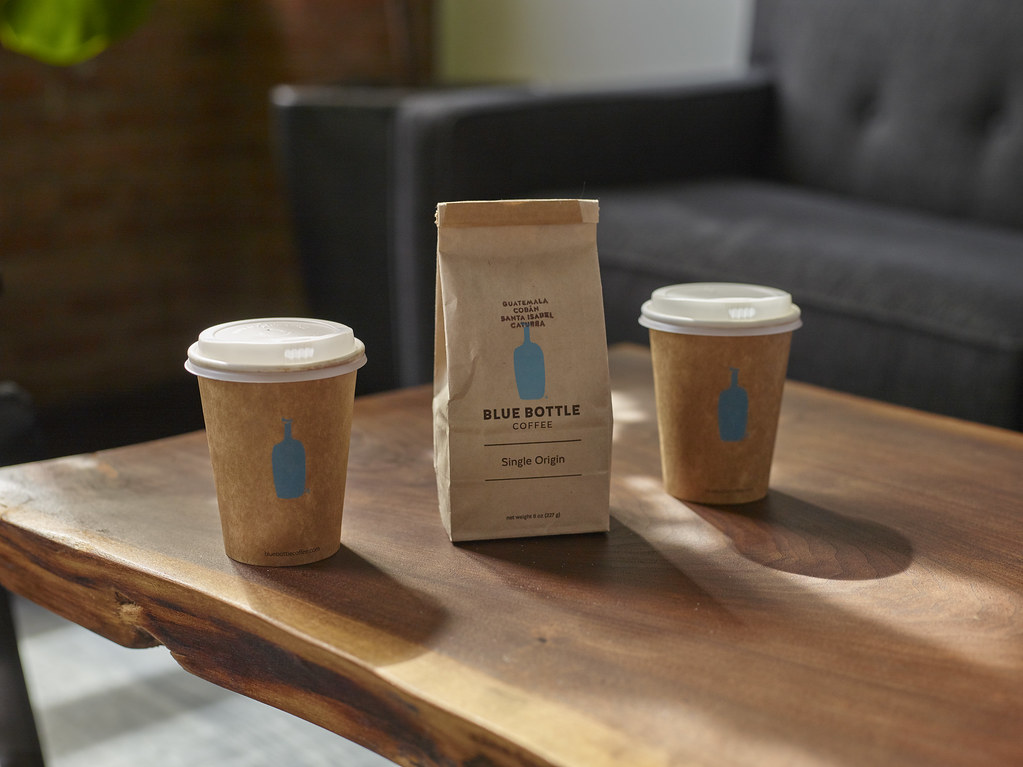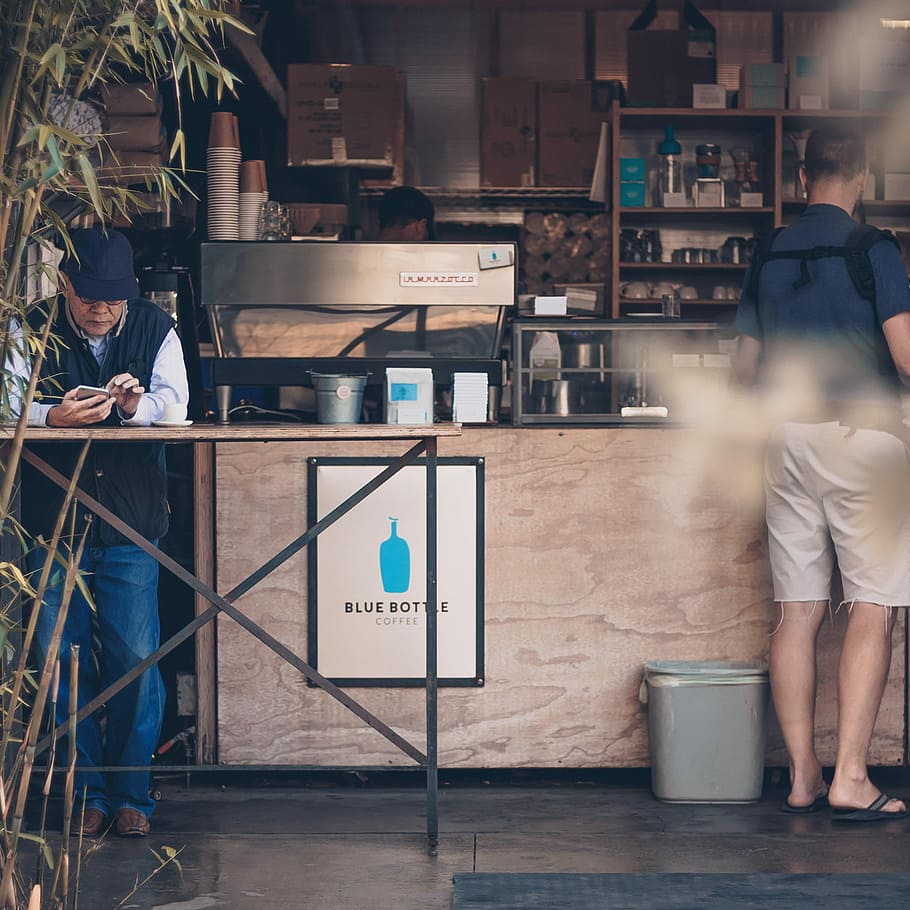June 4, 2020
6 min read
Blue Bottle Coffee Increases Pastry Ordering Accuracy Using Provectus’ AI-powered Demand Forecasting Solution
Author:
Provectus, AI-first consultancy and solutions provider.

Our purpose is simple — to get great, peak-flavor coffee to everyone who asks for it, and we plan to do so with technology and data insights offered by AI.
Challenge
All Blue Bottle cafes order pastries several times each week to ensure guests always have a fresh supply. Because the orders are hard to estimate manually, cafes either prematurely sell out pastry if under-order or contribute to waste if over-order. Blue Bottle needed a more scalable and precise solution to reduce food waste across their cafe chain.
Solution
Blue Bottle’s engineering team, in partnership with AI consultancy Provectus, built a machine learning-powered predictive ordering system to generate accurate future pastry demand. Using inventory data, historical sales and growth projections, the algorithm suggests how many of each kind of pastry each cafe should order every day.
Outcome
Blue Bottle Coffee’s new predictive ordering system forecasts pastry order quantities to café leaders based on current inventory, sales history, and growth predictions with high accuracy. By closely monitoring and following the predicted orders, Blue Bottle cafes were able to improve pastry ordering by 8% in July compared to the previous month.
About Blue Bottle Coffee
Blue Bottle Coffee is a coffee roaster and retailer headquartered in California. Operating a network of over 70 world-class cafes in the US, Japan and South Korea, Blue Bottle Coffee is a leader in third-wave coffee. The company sells single-origin beans of the highest quality at their cafes and by subscription, giving its discerning customers a peak-flavor coffee experience on demand.
Coffee Without Pastry Is Just Not as Good
Coffee sales alone have never been the main driver of growth for coffee shops and breweries. The significant portion of their sales comes from culinary, such as pastries, dairy products, and merchandise.
Coffee is considered as a staple product, but remaining competitive means selling more than just coffee. Coffee chains are pressed to sell a variety of complementary products, from pastry to merchandise, to win customer loyalty and grow their business.

Culinary products stimulate coffee sales and attract more customers, spurring a coffee shop’s growth by word of mouth. By offering a variety of pastries, cookies, brownies, coffee shop owners can expect their customer base to grow and the consumption of coffee and culinary to increase. Knowing this, the team at Blue Bottle Coffee provides customers with gourmet coffee options complemented by a variety of culinary products and delicious pastry like croissants, cookies and waffles.
Because Blue Bottle’s success rests on the ongoing availability of a sufficient, fresh supply of specific pastry options, cafe leaders must place orders for those items several times a week. They may spend several hours each week guesstimating the volume of pastry they are likely to sell, but because the shelf-life and consumption of those items vary, they often end up placing inaccurate orders.

Blue Bottle’s success rests on the ongoing availability of a sufficient, fresh supply of specific pastry options. Cafe leaders have to spend up to several hours each week guesstimating the volume of pastry they are likely to sell. Because the shelf-life and consumption vary, they often end up placing inaccurate orders.
Inaccurate orders can lead to pastries prematurely selling out if under-ordered, leaving customers without their favorite pastry. Reduced customer satisfaction means missed sales opportunities that undercut the company’s bottom line.
On the other hand, over-ordering can result in an overstocked inventory, which is often the case, causing waste and reducing the cafe’s revenue. Cafe leaders are forced to dispose of unused pastry, which is a waste of food and money.
By helping its cafe leaders create highly accurate demand forecasts for both faster- and slower-moving pastries, Blue Bottle Coffee can save money, increase customer satisfaction, and focus on business growth.
Better Predictions Are Possible
Accurate demand forecasting can help Blue Bottle Coffee:
- Improve utilization of various pastries
- Decrease overstock waste
- Increase revenue through higher sales and optimized inventory
Historically, each cafe leader was tasked with predicting how many pastries they would need for the coming week. The manual ordering system worked when Blue Bottle only had a handful of cafes in the Bay Area. But with 70+ cafes across the globe, they had to consider a more scalable and precise solution.
Without an automated solution, cafe leaders would have to continue to rely on manual guesswork to assess historical sales data, current inventory, and growth projections. This approach would be complex and tedious, and likely to lead to costly errors.

Blue Bottle Coffee’s manual ordering system worked when they had a handful of cafes in the Bay Area. But with 70+ cafes across the globe, they had to consider a predictive ordering system powered by AI & ML, to estimate orders more accurately and at a larger scale.
A predictive ordering system powered by artificial intelligence and machine learning is able to analyze thousands of data points to generate accurate future pastry demand.
With the aid of predictive analytics, cafe leaders will no longer have to rely on their math skills to estimate orders, reducing the risk of over- or under-stocking errors. Accurate demand predictions ensure the best possible balance between reasonable waste and desired profit, increasing satisfactory performance of Blue Bottle cafes.
The proposed predictive ordering system utilizes machine learning models that are trained using current inventory, sales history data, and growth predictions, with the goal of increasing order prediction accuracy.
Building a Predictive Ordering System with Machine Learning on AWS
The predictive ordering system was built on top of data stored in Amazon Redshift, a fast, simple, cost-effective data warehousing service, along with other data sources.
The first step was to apply Time Series Analysis to create new ML models and enhance old models used for forecasting.
Airflow reinforced through Amazon ECS was used to orchestrate complex computational workflows and data processing pipelines. To simplify the creation of new DAGs in Airflow by the Blue Bottle team, a special “black box” library was developed. It offered specific call methods which could be added to the DAG to prepare data, train models, forecast demand, and perform various other tasks.
The new prediction system consists of three pipelines:
- Model Data Pipeline. This pipeline is responsible for data conversion and data transfer from Amazon Redshift to Amazon S3. It serves as an integral part of all three pipelines.
- Training Pipeline. Built for model training, this pipeline determines and delivers the best possible combination of hyperparameters and records them in S3 for further use in demand forecasting.
- Forecasting Pipeline. This is the major pipeline that receives data to be run through the model. It uses the best hyperparameters in S3 to generate a prediction. The prediction results are recorded in S3 and RDS, to be used to create demand forecasting reports in the Blue Bottle Coffee platform’s dashboard.
Models training and prediction execution are performed with Amazon SageMaker Training and Amazon SageMaker Batch Transform. Forecasting is performed once a week with subsequent daily updates, based on the latest data from the cafes.
Blue Bottle’s development team uses a separate, specifically developed Model Development Pipeline for testing, model comparing and matching, and selecting the most accurate models to be used in production. The developers work in Amazon SageMaker; the new models are saved as SageMaker Algorithm / Model.
Blue Bottle Coffee now has a UI-friendly predictive ordering system that allows its developers to continue to improve prediction accuracy. It also allows their cafe leaders to check the system for demand forecasts and edit those forecasts manually if necessary. This predictive ordering system has helped Blue Bottle accurately forecast pastry demand — which aligns with their zero waste goals and financial bottom line.
Happy Customers Mean a Stronger Bottom Line
Efficient and accurate ordering of pastry ensures that Blue Bottle Coffee meets their customers’ demands for variety and availability. By keeping customers happy, Blue Bottle has strengthened its position in the third-wave coffee movement.

Highly accurate demand forecasts mean less under- or overstock, creating the right balance between stockouts and waste. This not only improves sales figures and increases revenue, but it also delivers massive cost savings. Thanks to demand forecasting, Blue Bottle is strategically and technically ready to scale profits without increasing operational loss.
On the operational side of things, more accurate demand suggestions that are available to cafe leaders in the system also mean time savings. No longer do they have to spend hours guesstimating how many items of pastry to order for a given day or week.
The scalable and precise predictive ordering system delivered by Provectus has helped Blue Bottle to accurately forecast demand, cut waste, and improve food utilization. Overstock waste is reduced, resulting in cost savings and driving down the company’s ecological footprint. It helps keep Blue Bottle’s customers happy and satisfied, enabling it to grow by spending less, and forging a direct path to further growth in new markets.
Looking to learn more about AI-enabled demand forecasting solutions by Provectus? Visit the solution’s page, or contact us directly at info@provectus.com.
